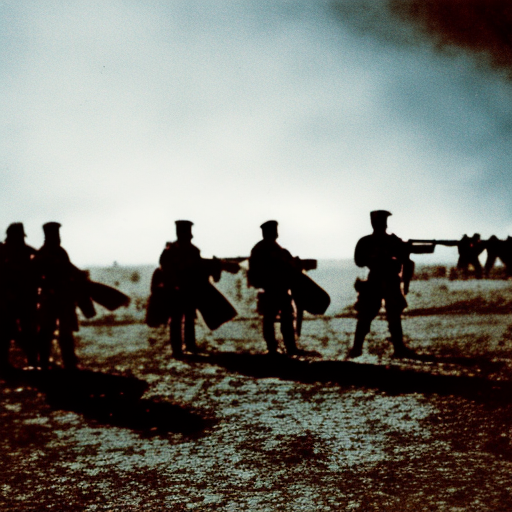Battle of Saragossa: A Fierce Resistance during the Peninsular War
The Battle of Saragossa, also known as the Siege of Saragossa, was a significant conflict that took place during the Peninsular War, a part of the Napoleonic Wars. The battle occurred from June 15 to August 13, 1808, in the city of Saragossa, Spain. It was a fierce and prolonged struggle between the French army, led by General Jean-Antoine Verdier, and the Spanish resistance forces, commanded by General José de Palafox.
The Context: The Peninsular War
The Peninsular War was a conflict fought between France and its allies, including the Kingdom of Spain, against the forces of the United Kingdom and Portugal. The war began in 1807 when Napoleon Bonaparte invaded Portugal, aiming to enforce the Continental System and weaken British trade. The Spanish people, however, rose up against French occupation, leading to a protracted guerrilla war.
The Siege of Saragossa Begins
In 1808, the French army, under General Verdier, laid siege to the city of Saragossa. The Spanish resistance, led by General Palafox, was determined to defend the city at all costs. The initial French assault was repelled, and the siege turned into a long and brutal battle. The Spanish forces, consisting of both regular soldiers and civilian volunteers, fiercely defended the city against the French onslaught.
The First Siege: June 15 to July 4, 1808
During the first phase of the siege, the French bombarded the city with artillery and attempted to breach the walls. The Spanish defenders, however, held their ground and inflicted heavy casualties on the French. The narrow streets and buildings of Saragossa provided excellent cover for the Spanish fighters, who fought with determination and resilience. Despite their efforts, the French were unable to capture the city and were forced to retreat.
The Second Siege: July 20 to August 13, 1808
After regrouping, the French army returned to Saragossa for a second siege. This time, they launched a more intense assault, using mines and explosives to breach the city’s defenses. The Spanish resistance, although weakened by the previous siege, continued to fight fiercely. The battle became a brutal urban warfare, with both sides suffering heavy losses. The French managed to capture several key positions, but the Spanish defenders held on, refusing to surrender.
The Aftermath and Legacy
After two months of intense fighting, the French finally gained control of Saragossa. The Spanish resistance forces, although defeated, had inflicted heavy casualties on the French army. The battle had a profound impact on both sides. The Spanish defenders became symbols of resistance against French occupation, inspiring further uprisings throughout Spain. The French, on the other hand, realized the difficulty of subduing the Spanish people and the strength of their determination.
The Battle of Saragossa was a testament to the resilience and courage of the Spanish resistance forces. Despite being outnumbered and outgunned, they held off the French army for an extended period, inflicting significant losses. The battle also highlighted the challenges of urban warfare and the effectiveness of guerrilla tactics. The Spanish resistance in Saragossa became a symbol of national pride and defiance against foreign invaders.
In conclusion, the Battle of Saragossa was a fierce and prolonged conflict during the Peninsular War. The Spanish resistance forces, led by General Palafox, defended the city against the French army, commanded by General Verdier. The battle consisted of two sieges, with the Spanish defenders holding off the French assaults for two months. Although the French eventually captured Saragossa, the battle had a lasting impact, inspiring further resistance against French occupation in Spain.












